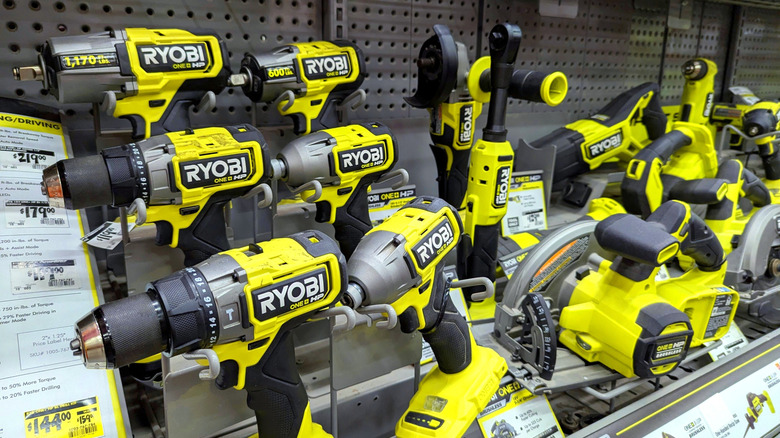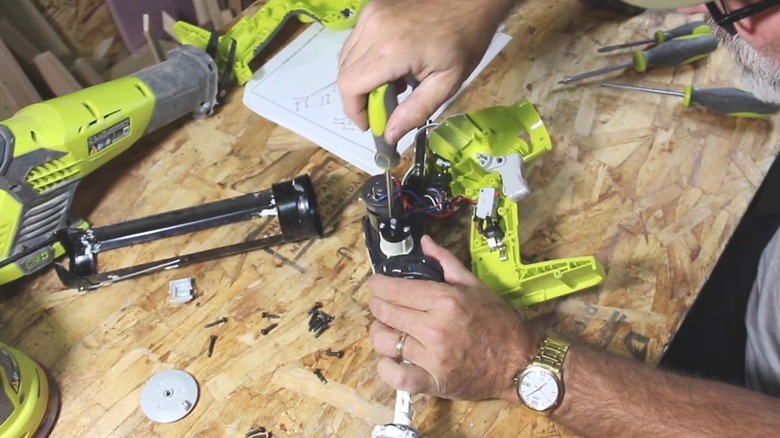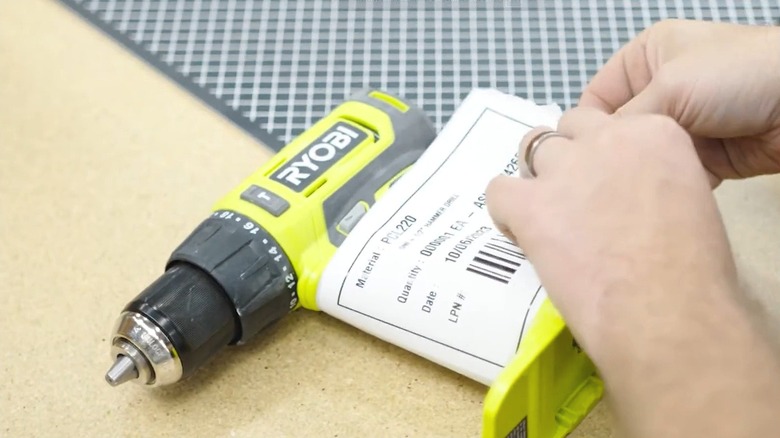What To Know About Ryobi's Warranty Before Buying
When you buy Ryobi power tools, you expect them to give you long-lasting performance. After all, Ryobi is one of the best power tool brands at Home Depot, and the big box retailer even has an exclusive partnership to sell Ryobi products. It is a strong tool brand, but even the strongest brands can have problems that leave them in need of some troubleshooting. If the problem is severe enough and the Ryobi product is new enough, you might be able to file a warranty claim. Warranty coverage can be difficult to understand, however, especially when you discover that certain protections are actually not part of the coverage. One of the downsides of buying cheap power tools to save money is that they may have shorter or more restrictive warranty periods. Before you buy, pay close attention to the duration of the warranty, the repairs that it covers, and any items or details you may need to reference should you ever file a claim. Fortunately, most of Ryobi's warranties cover multiple years and fits within the standards set by the majority of tool manufacturers.
The basics of Ryobi's warranty program state that all 18V tools, batteries, and chargers have a three-year limited warranty. For 40V outdoor power tools, you'll receive a five-year limited warranty, but the 40V batteries and chargers have three years of coverage. Hand tools have the best coverage with a limited lifetime warranty. It doesn't matter whether you buy your Ryobi tools from its official website or from Home Depot – the warranty is still valid, as long as you follow the rules and understand the specifics of what each warranty covers.
Ryobi's warranty covers repairs on product defects
You'll see the word "limited" appear in all of Ryobi's warranty documents, but what does that mean? Legally, a full warranty provides complete coverage for parts and products. A limited warranty may only cover certain parts of the products or certain types of problems. Ryobi's limited warranty does not cover products that the purchaser misused, altered, neglected, or operated for purposes other than what the user manual specifies. The warranty coverage also won't help you if the tool experiences normal wear and tear that causes it to stop working. Instead, it covers defects in the product's workmanship or materials that may have existed unbeknownst to you when you bought it, such as a missing or faulty part. This applies for the length of the warranty starting at the date of purchase, not at the first time of use, so test your tools right away.
Ryobi might choose to void the warranty if you make an unauthorized repair to the unit, either yourself or at a repair shop that Ryobi doesn't recommend. Ryobi has authorized service centers that it requires you to use when requesting repairs under warranty coverage. You can search for these service venters near you through the Ryobi website. If your tool breaks down outside of the warranty coverage period, you can also visit these service centers for repairs at your own cost.
Pitfalls to beware of when filing a warranty claim with Ryobi
Calling the Ryobi customer service number is the best way to start your warranty claim, but you can also use the contact form on Ryobi's website. Ryobi requests that you retain the receipt as proof of purchase for the product to remain eligible for the warranty. You should also have the model number and serial number for your product available. Registering your product at the time of purchase can expedite warranty claims.
Even though Ryobi lists a map of authorized service centers on its website, some customers say this process can be challenging — and hardly worth it in the end. In a video shared by reviewer Alex Camp on YouTube, he explained that the closest service center on the map was a Home Depot, but when he tried to repair an impact driver there, the hardware retailer said it no longer makes warranty repairs on Ryobi tools. After calling the Ryobi customer service team for help, the only other options for Alex Camp involved driving 90 minutes to the next closest service center for an inspection or mailing the tool at the consumer's expense to a service center, neither of which were very desirable options for an inexpensive tool that's relatively easy to replace.
One way to avoid some of these warranty hassles is taking advantage of Ryobi's return policy option. If the product stops working because of defective workmanship within 90 days of purchase, you can return it to the retailer for a replacement model. You must provide proof of purchase and the equipment in its original packaging to take advantage of this option.


